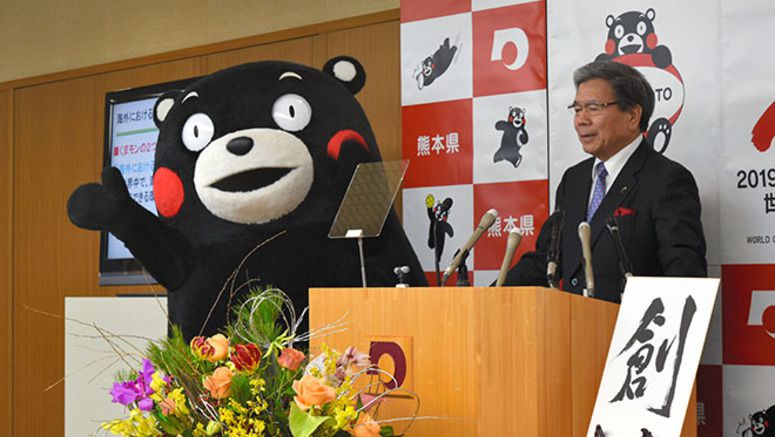Kumamoto Prefecture Lifts The Ban On Overseas Use Of The Kumamon Mascot Design

KUMAMOTO--Kumamoto Prefecture has lifted the ban on overseas use of the Kumamon mascot design, sparking anger from local companies that want to keep the popular bear-like character for themselves.
Many companies say the original purpose of the mascot should remain the same: promoting the prefecture on the southern main island of Kyushu and its products.
The prefectural government on Jan. 8 started allowing overseas companies to use the Kumamon design--if they pay a usage fee equivalent to 5 to 7 percent of the retail price of their goods. They can use the design for purposes other than promotion of the prefecture.
A meeting on the issue was held on Jan. 15 between prefectural government officials and local business operators.
A representative of a company that manufactures and sells Kumamon stuffed dolls and other items said its business partners in China and elsewhere have canceled orders worth 6 million yen ($54,200), saying "we can make such goods by ourselves from now on."
"We have been supporting Kumamon since before it became popular," the representative said. "We can’t compete with Chinese firms if anyone is allowed to make Kumamon goods."
Other business operators said the prefectural government should "give preferential treatment to companies in the prefecture."
The adoption of the Kumamon design had been limited to Japanese companies, in principle.
Japanese companies have been able to use the design free of charge for promoting tourist spots and agricultural products from Kumamoto Prefecture.
The number of applications to use the Kumamon design has increased every year since the prefecture first opened the doors in 2010. Total sales of Kumamon goods rose from 2.5 billion yen in 2011 to 128 billion yen by 2016.
Businesses in Kumamoto Prefecture have been able to export goods featuring Kumamon since 2014. Prefectural government events held abroad have also featured the design.
Kumamoto Prefecture plans to use the collected usage fees to examine the quality of Kumamon products and crack down on fake goods.
Many fake items based on the mascot have been reported outside Japan. A bath facility in Shanghai even used a Kumamon look-alike to promote itself without permission.
The prefectural government has raised a protest for each violation uncovered.
In the Jan. 15 meeting, a prefectural government official told the companies that there is no option but to enable Kumamon’s overseas use and collect fees to protect the brand image of the mascot.
"Unless thorough quality control and anti-fake measures are taken, Kumamon’s brand value itself could be damaged," the official said.
The move is also aimed at attracting more foreign tourists and increasing exports of Kumamoto Prefecture-made items by cashing in on the growing popularity of Kumamon mainly in China and other Chinese-speaking regions.
Japanese companies can also use the fee-based system to release their goods in overseas markets.
Kumamoto Governor Ikuo Kabashima has emphasized that overseas use of the Kumamon design may cause confusion over the short term but will benefit local companies in the long run.
"Kumamon is not something we should monopolize," he told a news conference on Jan. 18. "We can be proud of Kumamon if it is loved around the world for 100 years or 200 years just like Mickey Mouse."
Kabashima added that the prefectural government will consider measures to minimize any adverse effects on local companies.



















